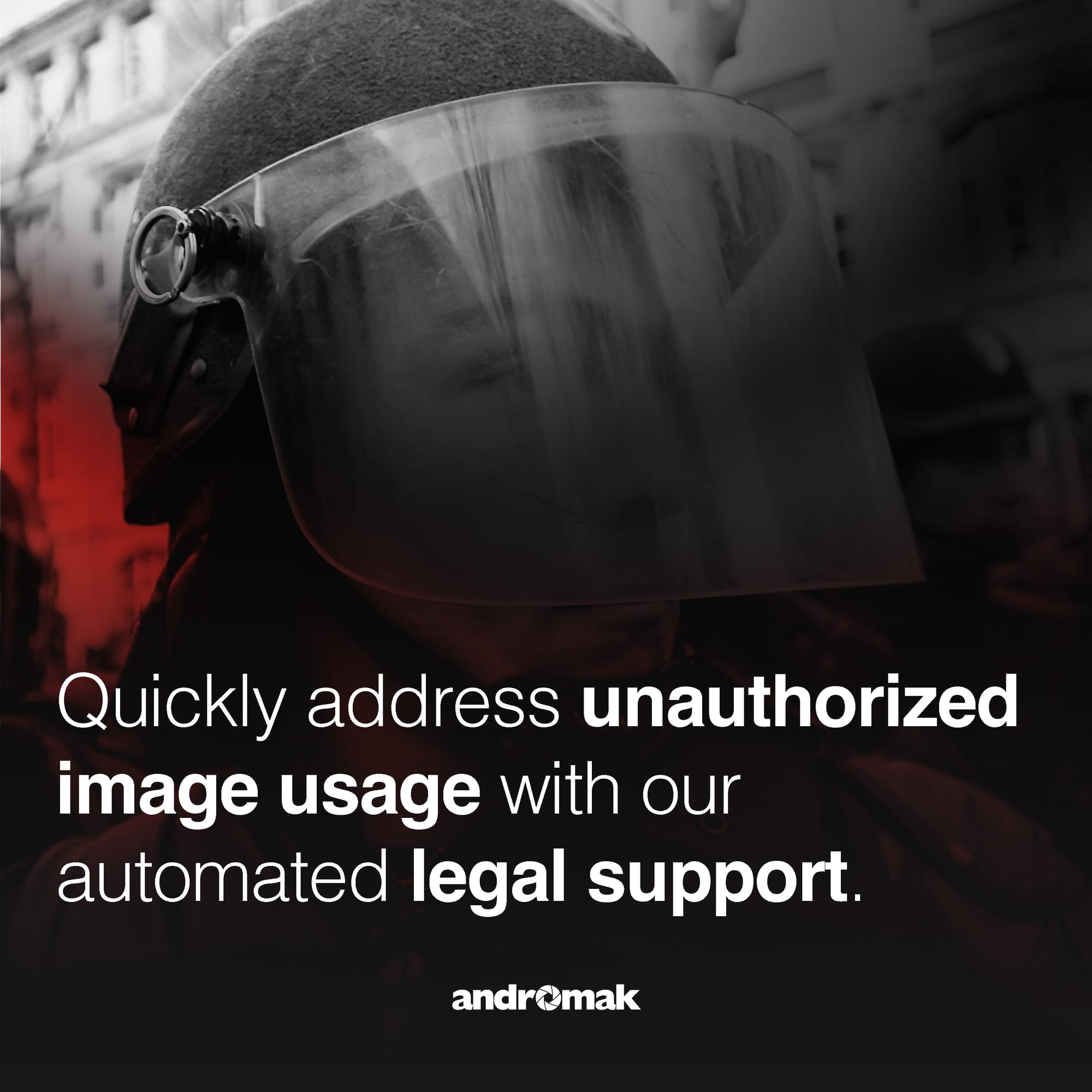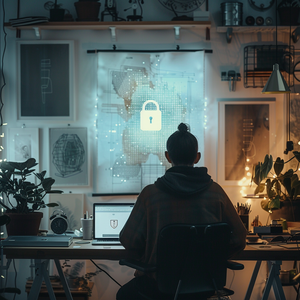As digital content continues to proliferate across the internet, photographers increasingly face challenges related to the unauthorized use of their images. Understanding the lawsuit options available for copyright issues in the European Union (EU) is crucial for protecting your intellectual property and ensuring you receive due credit and compensation. This article delves into the legal landscape of copyright in the EU, explores the steps photographers can take to address infringements, and highlights how platforms like Andromak can support you in safeguarding your rights.

The digital age has revolutionized the way we share and consume visual content, offering photographers unprecedented opportunities to showcase their work. However, it has also made it easier for images to be copied and distributed without permission. In the European Union (EU), robust copyright laws provide photographers with mechanisms to protect their work and seek redress in cases of infringement. This article explores the legal options available for addressing copyright issues in the EU, provides practical steps for taking legal action, and discusses how platforms like Andromak can assist photographers in navigating these challenges.
Understanding Copyright Law in the EU
Copyright law in the EU is designed to protect the rights of creators by granting them exclusive control over the use of their works. This includes the right to reproduce, distribute, and display their images. Understanding the basics of EU copyright law is the first step in safeguarding your work.
The Legal Framework
The EU has a harmonized approach to copyright protection, which means that while individual member states have their own laws, these laws are based on common principles established by EU directives and regulations. Key legislation includes:
The Copyright Directive (2001/29/EC): Establishes harmonized rules for the protection of copyright and related rights.
The Digital Single Market Directive (2019/790): Updates and modernizes EU copyright law to address digital and cross-border issues.
Rights Granted to Photographers
Under EU copyright law, photographers are granted several exclusive rights, including:
Reproduction Right: The right to control the making of copies of their work.
Distribution Right: The right to control the distribution of copies to the public.
Public Display Right: The right to control the public display of their work.
Moral Rights: The right to be identified as the author of the work and to object to derogatory treatments of the work.

Steps to Take When Your Work Is Infringed
Discovering that your work has been used without permission can be frustrating and disheartening. However, there are several steps you can take to address the infringement and protect your rights.
Document the Infringement
The first step is to document the unauthorized use of your work. Gather evidence such as screenshots, URLs, and any correspondence related to the infringement. This documentation will be essential if you decide to take legal action.
Contact the Infringer
In many cases, a direct approach can resolve the issue. Contact the infringer and inform them that they are using your work without permission. Provide evidence of your ownership and request that they either remove the image or properly attribute it to you. In some cases, you may also seek compensation for the unauthorized use.
Use Takedown Services
If the infringer does not respond or refuses to comply, you can use takedown services provided by various platforms. For instance, social media sites and web hosting services have procedures for reporting copyright violations. Submitting a takedown request can be an effective way to remove unauthorized content.
Legal Remedies Available in the EU
If informal approaches fail, photographers in the EU have several legal remedies at their disposal to address copyright infringement.
Cease and Desist Letters
A cease and desist letter is a formal way of demanding that the infringer stop using your work and take corrective action. This letter should outline your rights, the nature of the infringement, and the actions you expect the infringer to take. Cease and desist letters can often resolve disputes without the need for further legal action.
Seeking Legal Assistance
For more serious infringements, especially those involving significant financial loss, it may be necessary to seek legal assistance. Lawyers specializing in copyright law can help you understand your options and guide you through the process of enforcing your rights.
Filing a Lawsuit
If other methods fail, you may need to file a lawsuit to seek damages for the unauthorized use of your work. In the EU, copyright infringement cases can be brought before national courts. The remedies available include:
Injunctions: Court orders that prevent the infringer from continuing to use your work.
Damages: Financial compensation for the losses you have suffered as a result of the infringement.
Account of Profits: An order requiring the infringer to pay you the profits they made from the unauthorized use of your work.

Role of Andromak in Legal Support
Navigating copyright issues can be complex and daunting, especially without legal expertise. Platforms like Andromak provide valuable support to photographers in protecting their rights.
Integrated Legal Support
Andromak offers integrated legal support, connecting photographers with experienced copyright lawyers who can provide advice and representation. This network ensures that you have access to the expertise you need to effectively address infringements.
Takedown Services
Andromak also offers takedown services, making it easier to submit requests to remove unauthorized content. The platform simplifies the process, allowing you to focus on your work while Andromak handles the legal complexities.

Case Studies and Applications
To illustrate the impact of effective copyright enforcement, consider the following case studies:
Case Study: Professional Photographer in France
Marie, a professional photographer based in France, discovered that several of her images were being used without permission on a popular travel blog. She documented the infringements and contacted the blog’s owner, requesting removal of the images and compensation. When the owner refused, Marie used Andromak’s legal support to send a cease and desist letter. The blog owner complied, removing the images and paying Marie for the unauthorized use.
Case Study: Stock Photography Platform
A stock photography platform integrated Andromak’s tracking and takedown services to protect its photographers’ work. When images from the platform were found on other websites without proper licensing, the platform used Andromak’s tools to document the infringements and submit takedown requests. This proactive approach helped protect the rights of the photographers and maintained the platform’s credibility.
Copyright infringement is a significant issue for photographers in the digital age. Understanding the legal options available in the EU and knowing how to take action can help protect your work and ensure you receive proper credit and compensation. Platforms like Andromak provide essential support, offering legal expertise, automated documentation, and takedown services to help photographers navigate these challenges.
By staying informed about your rights and leveraging the tools available, you can effectively protect your intellectual property and focus on what you do best—creating stunning visual content. Whether you are dealing with minor infringements or significant unauthorized use, knowing your options and having access to professional support can make all the difference in safeguarding your work.

References
- "Understanding Copyright Law in the EU," European Union Intellectual Property Office. [Source](https://euipo.europa.eu/ohimportal/en/copyright-law)
- "Digital Single Market Directive," European Commission. [Source](https://ec.europa.eu/digital-strategy/our-policies/digital-single-market_en)
- "How to Protect Your Copyright in the EU," European Commission. [Source](https://ec.europa.eu/growth/industry/strategy/intellectual-property/copyright_en)
- "What to Do When Your Work Is Stolen," Creative Bloq. [Source](https://www.creativebloq.com/advice/what-to-do-when-your-work-is-stolen)
- "Copyright Takedown: What It Is and How to Use It," Pixsy. [Source](https://www.pixsy.com/copyright-takedown/)





